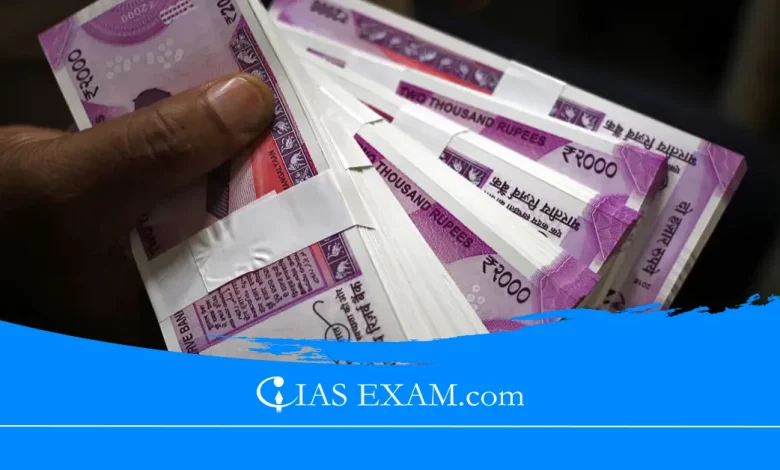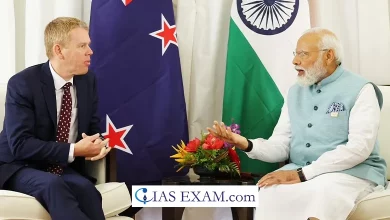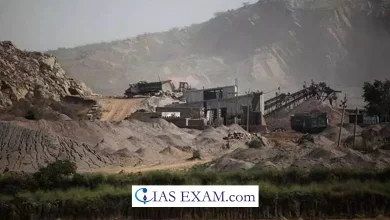Daily Current Affairs for UPSC
Prevention of Money Laundering Act (PMLA)
Syllabus: Indian Economy [GS Paper - 3]

Context
- The Delhi High Court recently turned down Chief Minister Arvind Kejriwal’s petition for temporary protection against coercive action during the Enforcement Directorate’s money laundering investigation into his role in connection with the then-defunct excise policy.
- The court was considering a request by Delhi’s CM in an application aimed at obtaining interlocutory relief from any oppressive actions.
- This one plea forms part of his main writ petition contesting the summonses issued by the ED and interpretations of specific provisions in Prevention of Money Laundering Act (PLMLA).
Spotlight on Money Laundering Act
- The Money Laundering Act is a number of legal provisions and laws that are designed to control (prevent or solve) illegal money laundering behaviour. Its statutory authority is this act. To put it another way: the laundering of money earned through criminal activities (drug-trafficking or terrorist-financing) in order makes it look like proceeds from these activities had a legal source. This legislation usually consists of several important parts.
- Banks and other financial institutions are asked to monitor transactions that look suspicious or exceed a certain size, and if they can be interpreted as money laundering.
- Customer Due Diligence requires banks and other financially reputable entities to examine the identity of their clients along with what kind of business these clients do.
- Banks are required to keep detailed records of every transaction for their customers and of such records information.
- In conformity with the Act on duty of reservation, institutions will kindly proffer any suspicious transactions or other suspect occurrences to the authorities. This includes the setting up of a Financial Intelligence Unit (FIU).
- Individuals and companies off-neighbours may also face fines or imprisonment for flouting an anti-money laundering regulation.
- The precise content of a Money Laundering Act depends on the country, but one objective is to make it as difficult as possible for criminals to convert income earned illegally into legal property and impose punishment on those who try to do this. Such legislation plays an important part in countering financial crime at an international level and is often accompanied by high-profile cooperation guidelines set down in international agreements drafted by bodies like the Financial Action Task Force (FATF).
Prevention of Money Laundering Act
- Money Laundering: Terms for money laundering are covered differently under the various acts and depending on general practices too.
- As its direct impact, under the Prevention of Money Laundering Act “dirty money” concealed or gains obtained from illegal methods shall be considered “clean” income from offences; all aspects of clandestine felony are considered under this title.
- In this way, the PMLA enables the state to attach property during investigation of money laundering and subsequently confiscate this should it be proven that such funds are subject; theoretically for practical purposes before any trial either has begun or been held.
- In accordance with the PMLA, the Office for Investigation of Money Laundering is also tasked with examining cases related to this offence. Prosecutors search and raid homes to plunder power from above, as well as catching perpetrators on the spot.
- An interesting point to note is that banks and certain other entities must not only set up intelligence files but also report the Funk Report to India’s Financial Intelligence Unit (FIU-IND) promptly.
- Penalties: Penalties are set high under the Act for offending various fish in money laundering operations, including imprisonment as well as fines.
- The PMLA promotes international cooperation in prevention of money laundering, including mutual juridical aid.
- Amendments to date: The Act has been consistently revised in recent years to increase its scope, up penalties and heighten execution of anti-money-laundering measures.
- The PMLA, focusing on money syphoned off for financial gain from corruption, mafia activities, or in support of terrorism, lies at the intersection of India’s legal system fighting vice and financial capital crimes. To what extent it succeeds depends on effective enforcement of its rules and continuously adapting them to face new challenges posed by money launderers.
Conclusion
The PMLA is a crucial tool in India’s legal arsenal to combat corruption, organised crime, and terrorism financing by targeting the financial assets derived from these illicit activities. Its effectiveness, however, depends on the robust enforcement of its provisions and ongoing updates to address emerging challenges in financial crimes.
Source: The Indian Express
UPSC Mains Practice Question
Q.Critically Analyse the Effectiveness of the Prevention of Money Laundering Act (PMLA) in Tackling Black Money in India. [250 words]





.png)



